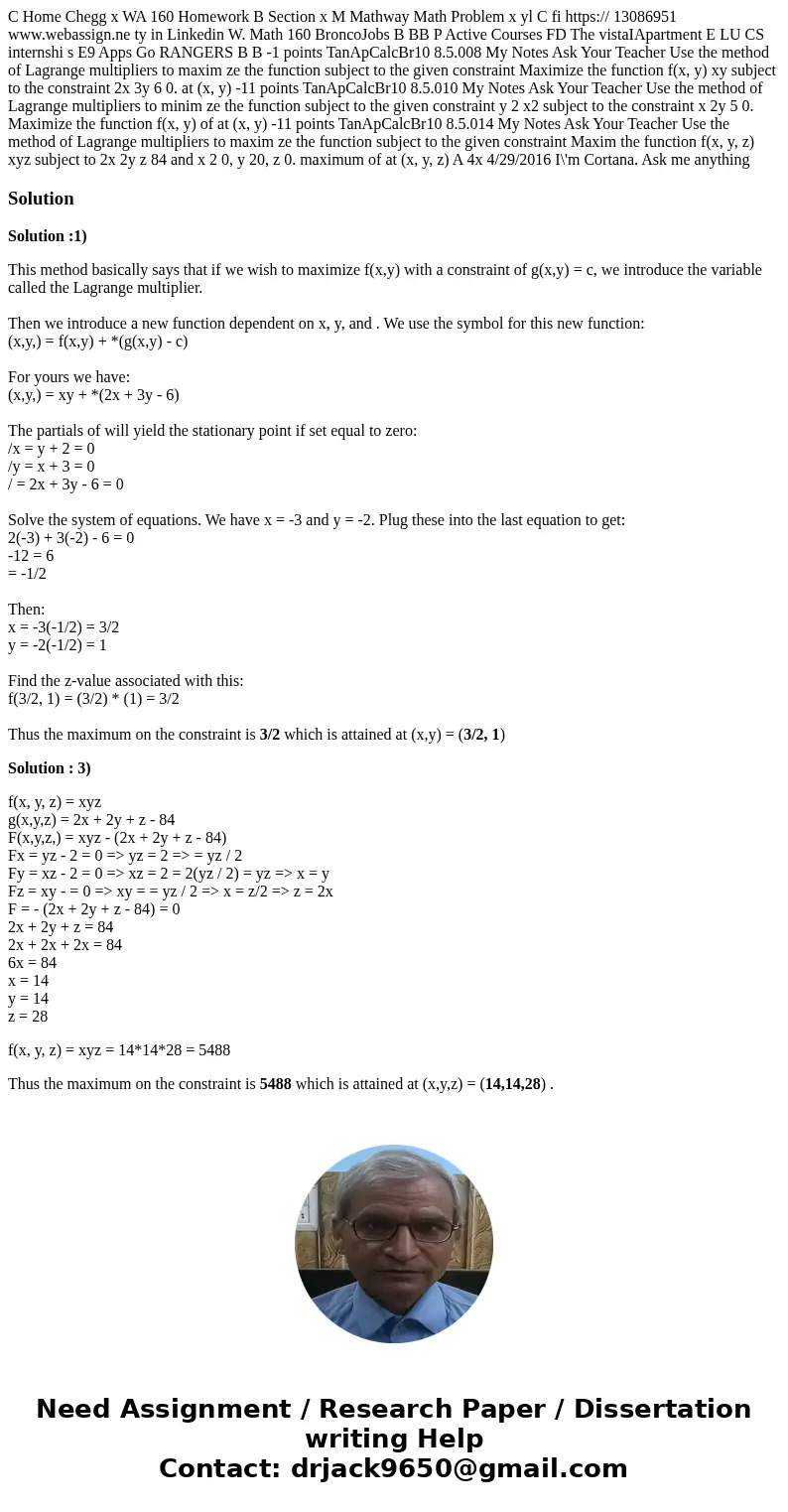C Home Chegg x WA 160 Homework B Section x M Mathway Math Pr
Solution
Solution :1)
This method basically says that if we wish to maximize f(x,y) with a constraint of g(x,y) = c, we introduce the variable called the Lagrange multiplier.
Then we introduce a new function dependent on x, y, and . We use the symbol for this new function:
(x,y,) = f(x,y) + *(g(x,y) - c)
For yours we have:
(x,y,) = xy + *(2x + 3y - 6)
The partials of will yield the stationary point if set equal to zero:
/x = y + 2 = 0
/y = x + 3 = 0
/ = 2x + 3y - 6 = 0
Solve the system of equations. We have x = -3 and y = -2. Plug these into the last equation to get:
2(-3) + 3(-2) - 6 = 0
-12 = 6
= -1/2
Then:
x = -3(-1/2) = 3/2
y = -2(-1/2) = 1
Find the z-value associated with this:
f(3/2, 1) = (3/2) * (1) = 3/2
Thus the maximum on the constraint is 3/2 which is attained at (x,y) = (3/2, 1)
Solution : 3)
f(x, y, z) = xyz
g(x,y,z) = 2x + 2y + z - 84
F(x,y,z,) = xyz - (2x + 2y + z - 84)
Fx = yz - 2 = 0 => yz = 2 => = yz / 2
Fy = xz - 2 = 0 => xz = 2 = 2(yz / 2) = yz => x = y
Fz = xy - = 0 => xy = = yz / 2 => x = z/2 => z = 2x
F = - (2x + 2y + z - 84) = 0
2x + 2y + z = 84
2x + 2x + 2x = 84
6x = 84
x = 14
y = 14
z = 28
f(x, y, z) = xyz = 14*14*28 = 5488
Thus the maximum on the constraint is 5488 which is attained at (x,y,z) = (14,14,28) .

 Homework Sourse
Homework Sourse